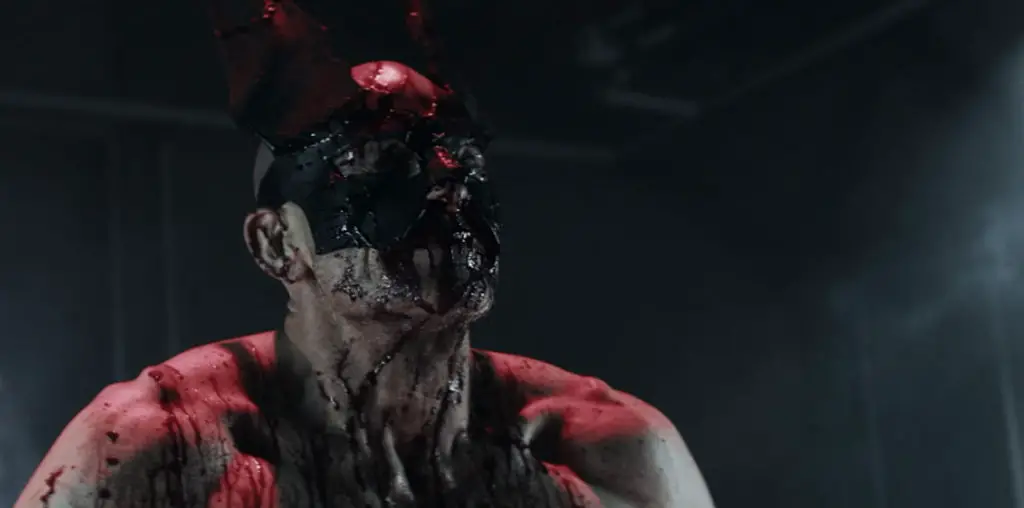
In Sun Tzu’s “The Art of War,” the Eastern mantra of military theory, it is said that the only way to be victorious in battle is to “know thy self” and to “know thy enemy.” Clearly, the filmmakers and characters participating in Hollywood’s grand epic, “The Last Samurai” are familiar with Tzu’s philosophy and that of Bushido. Such wisdom echoes throughout the fictionalized story of two men trapped in a changing world that no longer values their contribution to society. The film is very reminiscent of director Edward Zwick’s earlier work entitled “Glory” in which the all black 54th regiment of Massachusetts valiantly sacrifices their lives at Fort Wagner during the Civil War. Delicately, exposing the harsh reality of modernization and the extinction of traditional ways of life, “The Last Samurai” is a harrowing tale of honor, simple beauty, self-discovery, and ferocious conviction.
The story revolves around two men, warriors by nature, who are caught in a rapidly progressing era. Tom Cruise plays Nathan Algren, a Civil War hero and conqueror of the West, who is now relegated to museum relic or circus show. On the other side of the world, a feudal Japanese leader named Katsumoto, clings to the ways of the Samurai, upholding honor and duty in spite of an impending social revolution. The two men cross paths when the emperor of Japan, intrigued by American interests in his country’s economic market, offers Algren the opportunity to train and upgrade his army of the future. Led by his own greed, Algren obnoxiously accepts. But shortly after, he finds himself in a completely foreign and dangerous situation.
Omura, the emperor’s business consultant, orders Algren to lead the unprepared Japanese army against the Samurai, the last remaining threat to Westernization. Despite having modern weaponry, the army is unskilled at using it. And against a highly trained Samurai attack, the army is easily overrun. In the heat of battle, Algren is knocked off his horse and left to fend for himself. Surrounded by Samurai and disoriented, Algren continues to fight until he is finally captured. But surprisingly, the Samurai do not kill him. Instead, he is taken to their secret mountain village and cared for by Katsumoto’s sister, Taka, and her family.
Immersed in a foreign environment, Algren gradually begins to adopt their ways. He learns Japanese swordsmanship and kendo, dons traditional Japanese attire, and even begins to grasp the language. After many conversations with the Samurai leader, Katsumoto, Algren becomes an accepted part of the community and recognizes something truly gratifying about their culture, something simple and honorable: That the life he was so intent on destroying is the life that he once led. After being released by the Samurai, Algren returns to Tokyo, knowing full well that Katsumoto will not go quietly. There, he contemplates the future, a future in which there are only two choices: Staying true to his mission or staying true to his inner self.
While watching this film, I was immediately recollecting one of my favorite television mini-series of all time called “Shogun,” based on the epic novel by James Clavell. In “Shogun,” a 17th century British sea pilot named John Blackthorne, played by Richard Chamberlain, is captured by Japanese Samurai, narrowly avoids execution, gradually adapts to their way of life, and eventually helps in their defense against foreign invaders. Eerily similar, the film also borrows a few things from the 1990 Paul Mayersberg feature of the same title. Though not original in concept, “The Last Samurai” does create an interesting story arc, particularly surrounding the change in feudal Japan to a modern Japan. Supposedly, the film takes place during the 1876-1877 Samurai revolt, a bloody period that marked the end of tradition and paved the way for progress. Yet, it was really the introduction of these two social misfits that created an intriguing dilemma – global change versus personal change.
Having a big star like Tom Cruise can either help or hinder an epic such as this one. In particular, it can hurt it because his mug is synonymous with so many other roles from “Top Gun” to “Jerry Maguire” to “Born on the Fourth of July.” And when you’re talking about Mr. Hollywood and his super clean image, it could backfire in a period piece. But much to my surprise, Cruise brings his “A” game and in this case, he helps the film because his character is required to have a powerful leadership presence and a handful of charisma. Cruise has all of that and more – exuding believability through self deprecating outbursts early on and later, rediscovering passion and strength from humility. Subtle humor out of context works as well, like the scene when Algren first dons a kimono and hakama. It makes his character well rounded and more amusingly human.
But the picture could not have worked with Tom Cruise alone. Taking the film to the next level is Ken Watanabe, Cruise’s co-star, who plays the other leading man, Katsumoto. The chemistry between the two idealistic men is exceptional, a battle of wits and war analogies. Because Algren aspires to be more like Katsumoto, Watanabe’s performance had to match or exceed that of Cruise’s. And it does. In broken English, Watanabe is well polished, eloquent, and powerful. He embodies all of the traditional values of the samurai with ease, commanding your attention on screen like he commands his loyal followers. I was absolutely mesmerized by this performance and thoroughly enjoyed watching his calm conversations with Algren, his awkward dealings with the emperor, and his inner resolve to maintain principles despite a nation unwilling to accept them. Watanabe is absolutely brilliant.
Of course, it’s hard to talk about this film and not mention the incredible cinematography. It draws you in to the tranquil beauty of the samurai mountain camp, the look and feel of late 19th Century Japanese city life, and engages you in battles of Custer-like proportions. Cinematographer John Toll is one of the best in the business, particularly when it comes to period pieces. Nabbing Academy Awards for “Legends of the Fall” and “Braveheart,” Toll’s cinematic brilliance can also be seen in “The Thin Red Line,” a wonderfully sweeping epic replete with beautiful landscapes ravaged by war. And this film also has that balance, between the harshness of war and the simplicity of Japanese life. It wins over your senses.
My only disappointment with the film is that it could not break free of the Hollywood machine. Also known as conventional storytelling or in some circles, “selling out,” the Hollywood machine gives audiences what they want to see, while depriving them of something unique or excitingly different. For instance, the climactic battle, the love story, the redemption of the main hero, the indecisive emperor who finally makes a decision, and the villains who get their just reward – all are characteristics of a prototypical Hollywood film that goes to great lengths to satisfy everyone. Why do they do this? To make more money, of course. But it’s not natural and it’s highly unlikely that you would find a Samurai warrior in the Meiji Era who speaks English fluently, a Japanese woman who abhors Algren one minute and falls in love with him the next, and battle sequences in which neither of the main characters gets a scratch. As a fictional story, you expect a lot more leeway, but this wasn’t the case.
“The Last Samurai” is an incredible story of personal and global transition. Although it conforms to the Hollywood formula in some aspects, the acting is superior, the direction and camera work are brilliant, and the music from Hans Zimmer is majestic and epic-worthy. Exploring the complications of war and honor, Edward Zwick creates a stunning journey into the hearts of men compelled to move a nation forward and the hearts of men unwilling to sacrifice their traditional values for the sake of progress. Regretfully, the samurai will forever be linked to death. But films like this one will also enlighten us with their heroism. “If you must choose between two paths, either of which will bring death and defeat, then choose the path wherein you die fighting for honor and justice” (Pan-Ku).

